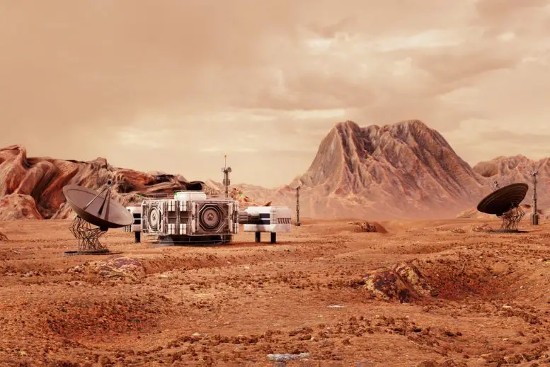Elon Musk wants to build a human civilization numbering one million on Mars by the mid-21st century. His rationale for creating SpaceX has always had this goal in mind. But getting to the million mark considering the precarious Martian environment makes Musk’s goal sound like lunacy.
Keeping one person alive on Mars indefinitely is a tall ask for agencies like NASA, let alone for a private company like SpaceX. If you watched the 2015 movie or read the book, The Martian, you get to see just how challenging prolonged human survival on the Martian surface could be.
An Open Access Scientific Reports article published in June 2020 calculated that the minimum number of human colonists needed to build a self-sustaining community on Mars was 110. This was a downward revision from previous speculative articles that set the number as high as 1,000. Whether 110 or 1,000, the idea behind Martian settlement, as Elon Musk professes, is to ensure humanity’s survival should an extinction event destroy life on Earth.
What has always perplexed me is the go-it-alone idea of only humans leaping to Mars along with a few domesticated plants and animals to be food sources for the continuation of human civilization. I cannot imagine human existence without the natural world to sustain us, without hearing bird song in the morning, or watching butterflies in flight. But I haven’t yet been invited to the International Space Station to find out what living without nature is like for short, let alone longer periods.
But the latest number for human Martian survival is 22 coming from a study produced by George Mason University Department of Computational and Data Sciences researchers in Fairfax, Virginia. At the link provided, you can download the preprint PDF article entitled, “An Exploration of Mars Colonization with Agent-Based Modeling.”
In coming up with their minimalist number of 22, the researchers looked at high-performing teams working in high-stress environments such as submarines, Arctic and Antarctic exploration sites, and small units fighting in wars. It noted that for a habitat on Mars to be largely self-sustaining it will need to find the resources locally for air to breathe, water to drink, fuels and energy for operating life-support technology, and building materials for habitats and infrastructure. These prerequisites were not considered in the study. Rather the focus was going beyond the “incredibly complex engineering problem,” to look at the mix of colonists that could pull this off. The study, therefore, focused on human attributes that would make for a successful demographic mix of talents and personalities. Hence, agent-based modeling (ABM). So what is it?
A Columbia University definition describes it as computer simulations “that study the interactions between people, things, places, and time…built from the bottom up meaning individual agents … are assigned certain attributes. The agents are programmed to behave and interact with other agents and the environment in certain ways. These interactions produce emergent effects that may differ from effects of individual agents.”
This type of modeling is seen as useful for understanding the optimal demographic mix required for the conditions that would exist at the outset of a Martian human settlement.
Looking at team successes here on Earth in extreme environments was therefore the focus of George Mason’s researchers. They studied “the ability of people, organizations and systems, using available skills and resources, to manage adverse conditions.” Unlike any Earth-based extreme environment, the future Martian settlement would experience unique challenges including distance from Earth, and radiation exposure that over four years will have exceeded the safety thresholds for humans to survive here on Earth.
The George Mason researchers posed several questions:
- What conditions are needed to create and maintain a stable Martian colony?
- What combinations of personality types are needed to optimally perform on Mars?
- What skill sets are needed for task differentiation to maintain the human colony?
- What resources are required to sustain a colony considering the two-year lag between resupply missions from Earth based on current chemical rocket technology and the alignment of the planets?
Earth and near-Earth space equivalent environments such as Antarctic bases, and the International Space Station represent the closest analogs. But unlike these, a Martian colony will not be able to rely on Earth to provide food, fuel, oxygen, and water. Waste disposal, recycling, mining of in-situ materials, and other secondary considerations, all part of a self-sustaining Martian settlement, cannot be duplicated by Earth equivalents.
In running the numbers five times through their ABM to determine the minimal colony size looking at a range from 10 to 170, the George Mason researchers concluded that a bare minimum of 10 could exist as long as Earth replacements continuously provided new personnel to make up for deaths. But the number 22 came up as the optimal minimum to maintain humans on Mars for the long run describing it as capable of bouncing back from accidents, stresses in human interactions, and other destabilizing events.
The study’s assumptions included a steady availability of energy (most likely nuclear) as well as sufficient initial water, air, food, and two-year resupply runs coming from Earth.
In Jean-Marc Salotti’s 2003 paper, he stated, “The scenario where you can simply send X number of people somewhere and just let them survive is very unlikely.” The number 22, far removed from Musk’s one million, therefore, based on current technological capabilities seems farfetched and more likely a death sentence rather than a mission to extend our human species to a second planet.
















